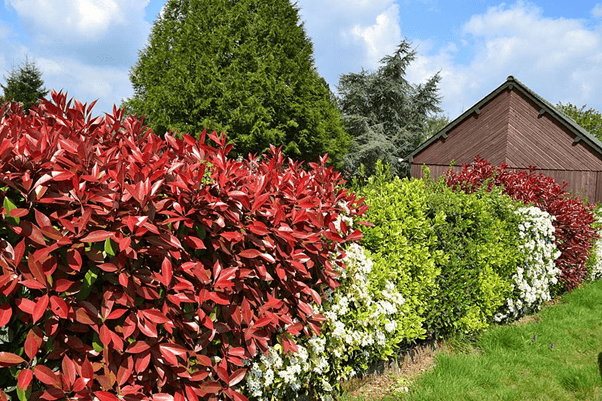Hedges add structure and texture to a garden. They provide a barrier against the elements and privacy from passers-by or neighbours. They also add year-round colour and freshness. This is why hedges are so popular in a domestic setting.

An additional bonus is that maintenance requirements aren’t onerous. Maintenance is needed, but when correctly done, it will keep hedges to a constant size year in and year out. Depending on the type of hedge and complexity of styling, maintenance could be required just once or twice a year.
Hedge Trimming Tools and Maintenance
Manual hedge clippers can be useful for tackling occasional unruly growth. However, electric hedge trimmers will give a professional finish and make short work of an otherwise lengthy job, particularly on large specimens. Buying good-quality tools will pay dividends in the long run, and Mountfield have long been a good option in the electric hedge trimmer market. Their build quality and reliability ensure trouble-free gardening.
With electric hedgetrimmers, as with any gardening tool, replacing parts when needed will extend the life of the tool. Genuine Mountfield parts such as those available at Mountfield spares will ensure that the hedge trimmer continues to perform at its best in the coming years.

Hedge Trimming Tips
To keep a hedge healthy, experts advise tapering, with the narrowest part at the top and a gradual spread toward the ground. This makes it easier for all branches to get some sunlight. Hedges will spread out at the top naturally, so regular trimming will help to keep the hedge healthy and looking good.
For tall hedges, an orchard ladder can be helpful. These are different from standard ladders in the sense that they have a hinged leg designed to go into the hedge itself to allow close access to larger hedges.
The key to hedge pruning is consistency. Whether a formal or more casual style is preferred, hedges will respond well to regular light trimming. This will encourage new growth. Any dead branches should be cut out and removed. These are likely to be lower down, where there has been more shade. Then, any invasive brambles or weeds that have permeated the hedge should be removed. If there are spots where holes have formed or growth is uneven, consider leaving any new growth to establish fully before trimming. These areas can be trimmed next time.
